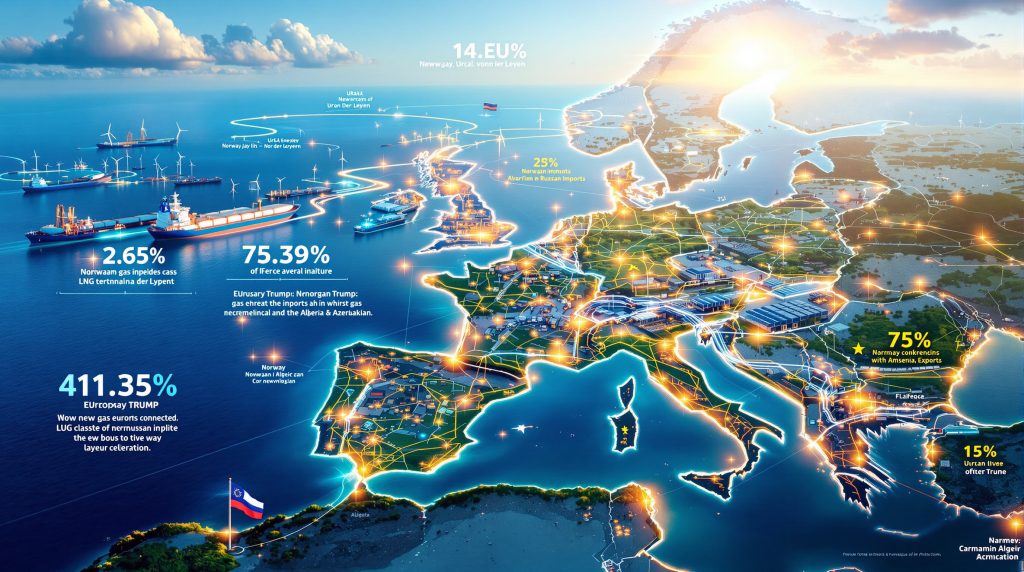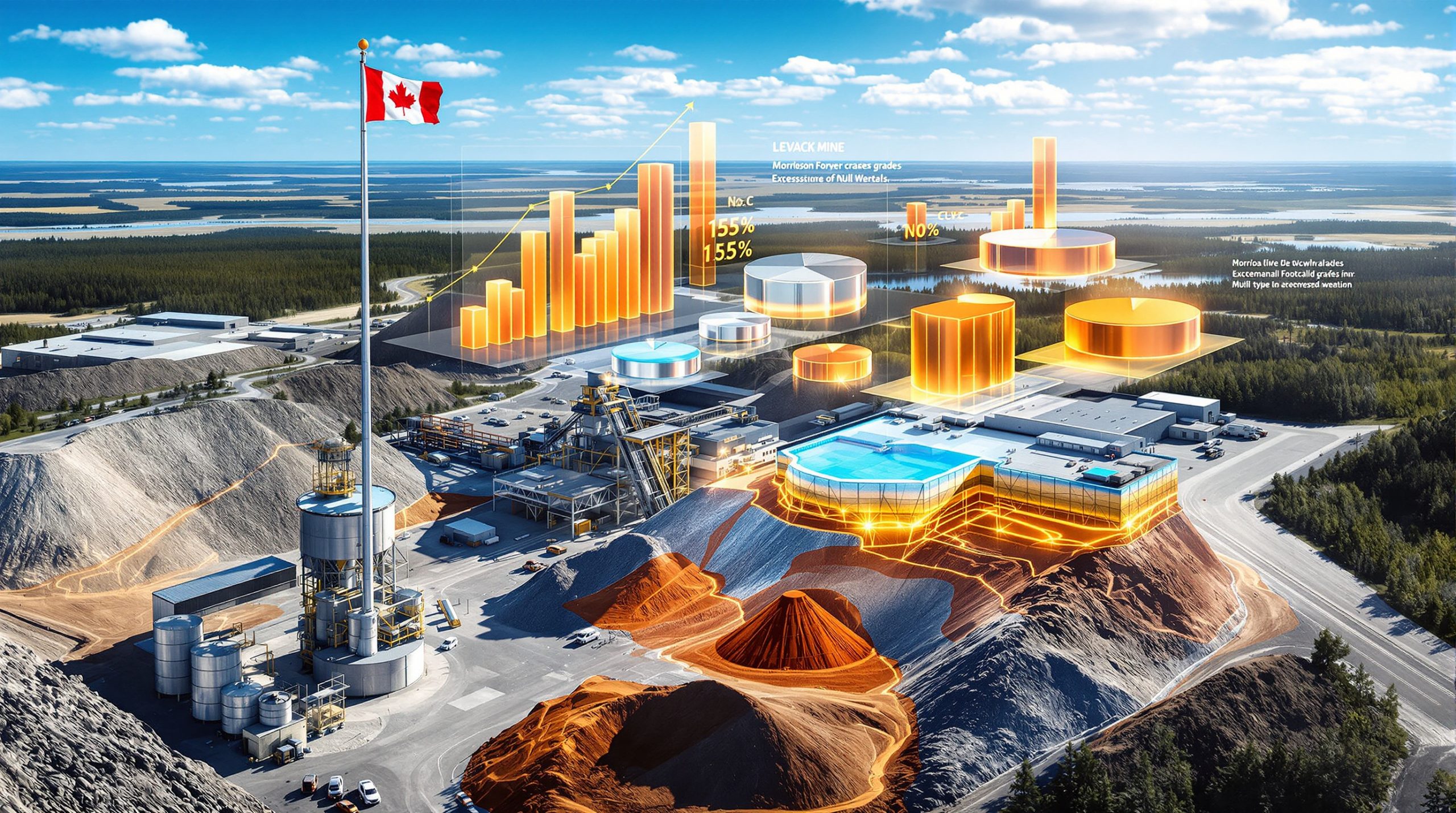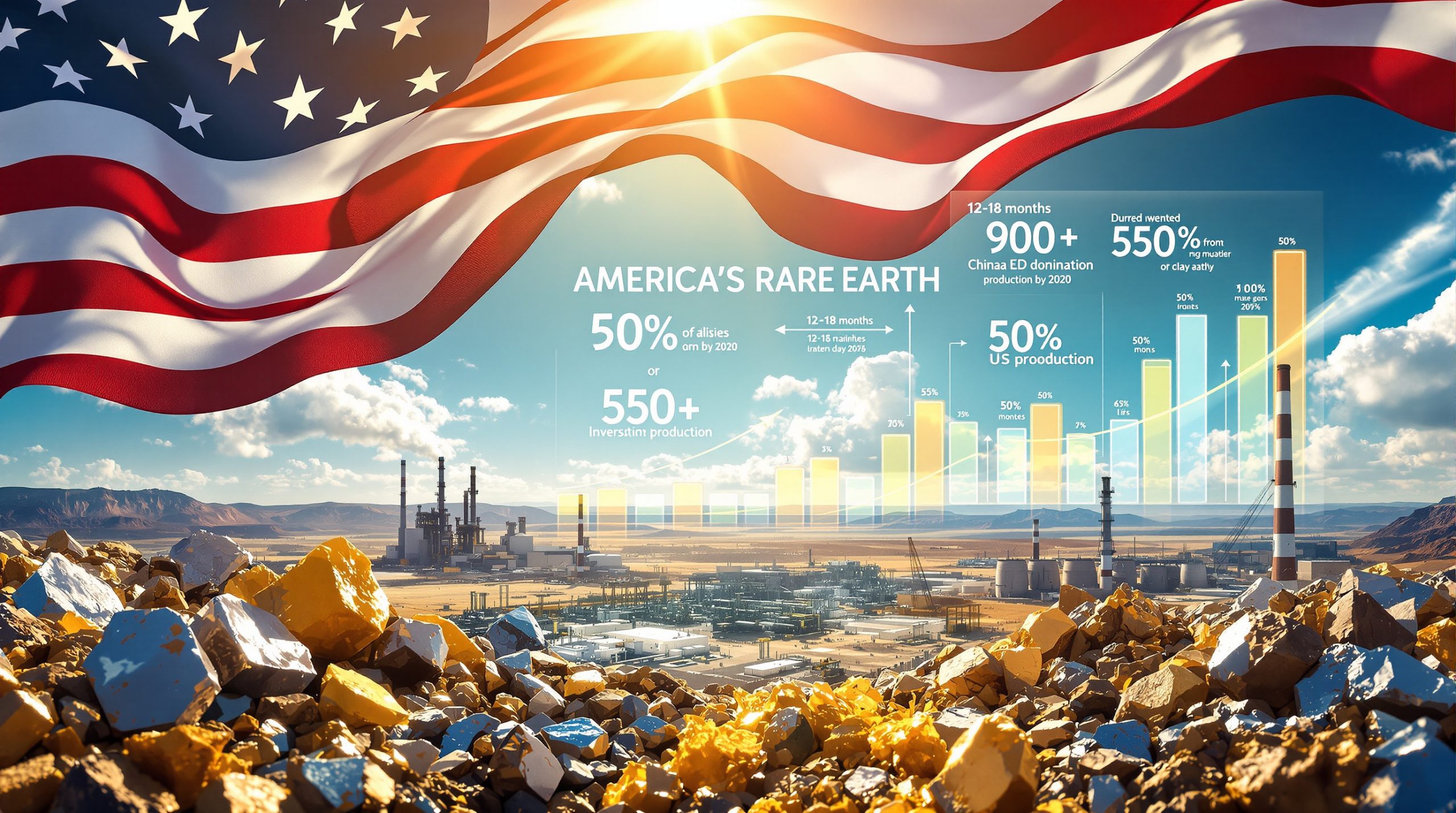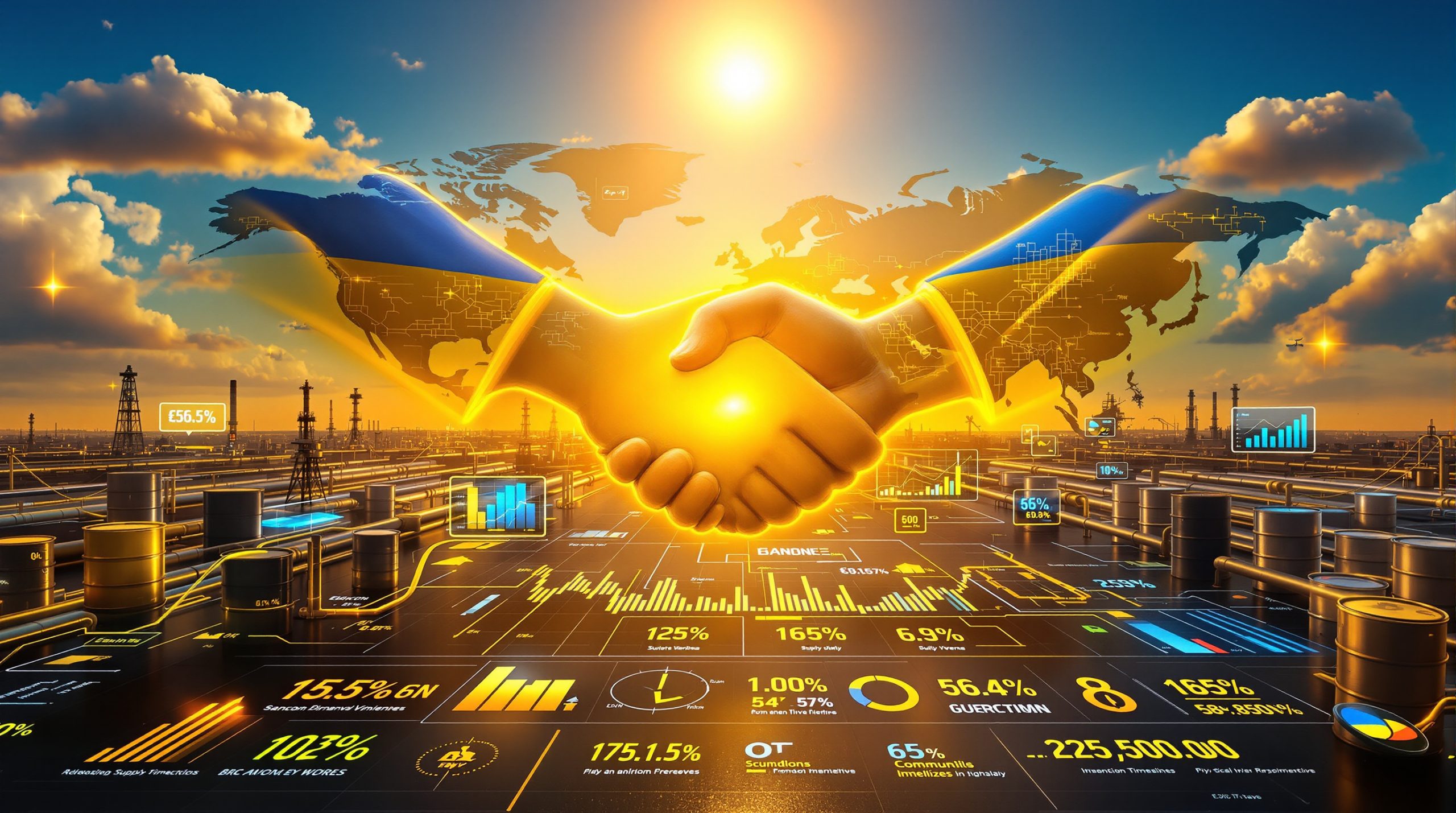What Triggered Europe's Energy Transformation?
The European energy landscape is undergoing a profound transformation, driven by geopolitical tensions, climate commitments, and economic imperatives. This shift represents one of the most significant reconfigurations of energy infrastructure and supply chains in modern European history.
The catalyst for this accelerated transition came in 2022, when Russia's invasion of Ukraine exposed critical vulnerabilities in Europe's energy security framework. Prior to this geopolitical crisis, Europe had developed a deep dependence on Russian energy resources, with Russian gas accounting for 45% of EU imports in 2021 (approximately 150.2 billion cubic meters).
This dependency created an urgent need for Europe to diversify its energy sources and redraw its energy map completely. The implementation of the REPowerEU plan set ambitious goals to move away from Russian gas dependency by 2027, marking a strategic shift in European energy policy that would significantly impact natural gas price trends.
How Dramatically Has Europe Reduced Russian Energy Dependence?
The Rapid Decline in Russian Gas Imports
The transformation of Europe's energy supply chain has been remarkable in both speed and scale:
| Year | Russian Gas Imports (bcm) | Percentage of EU Gas Imports |
|---|---|---|
| 2021 | 150.2 | 45% |
| 2024 | 51.7 | 19% |
This represents a dramatic 65.6% reduction in Russian gas imports over just three years, fundamentally altering Europe's energy security posture. However, this transition hasn't been entirely linear – Russian imports actually saw a slight uptick in 2023, primarily due to increased flows into Italy, Czechia, and France.
The speed of this transition is unprecedented in modern energy history, demonstrating Europe's determination to achieve strategic energy independence.
New Energy Partners Filling the Gap
To compensate for the 98.5 billion cubic meter shortfall created by reduced Russian supply, Europe has rapidly developed alternative supply relationships:
-
Norway: Delivered 91.1 bcm of gas to the EU in 2023, a 15% increase from 2021, representing 33.4% of total EU imports
-
United States: Increased LNG shipments by an impressive 139% between 2021-2023, reaching 45.1 bcm (16.5% of total imports)
-
Other Key Partners: Algeria (39.2 bcm), Qatar (11.8 bcm), Azerbaijan (11.7 bcm), and the United Kingdom (11.7 bcm)
Despite these new supply arrangements, Europe's total gas imports in 2024 remained 61.4 bcm lower than 2021 levels, reflecting both diversification efforts and increased energy efficiency measures across the continent.
What Does the Historic US-EU Energy Agreement Mean?
In a landmark development reshaping transatlantic energy relations, the European Union signed a massive $750 billion agreement with the United States in July 2025 for the import of liquefied natural gas, oil, and nuclear fuels by 2028.
This historic deal, announced by U.S. President Donald Trump and EU Commission President Ursula von der Leyen on July 27, represents not just an energy arrangement but part of a comprehensive trade package with significant economic implications:
-
The EU has accepted a unilateral 15% U.S. tariff on most of its exports to America
-
Europe has committed to $600 billion in investments in the United States
-
Energy trade between the EU and U.S. is projected to increase from approximately $75 billion in 2024 to $250 billion annually over the next three years
This agreement cements the United States' position as Europe's premier energy partner, with the U.S. already serving as:
-
The EU's top supplier of oil (15% of imports by value)
-
The leading source of LNG (50.7% of imports)
-
The second-largest coal supplier (31.3% of imports by value, behind Australia at 33.4%)
The scale of this agreement signals a fundamental realignment of transatlantic energy relations that will shape LNG market implications and global energy markets for decades to come.
How Is Europe Building Energy Resilience Through Infrastructure?
Europe's energy transformation extends beyond simply changing suppliers – it involves comprehensive infrastructure development to support a more diversified and resilient energy system.
LNG Terminal Expansion
Germany, previously heavily dependent on Russian pipeline gas, has rapidly developed LNG import capacity:
-
The country recently inaugurated a new LNG terminal in August 2025, enhancing its ability to receive shipments from global suppliers
-
This infrastructure expansion allows Germany to tap into the global LNG market rather than relying on fixed pipeline connections
-
Multiple additional floating storage and regasification units (FSRUs) have been deployed along European coastlines to provide flexible import capacity
Pipeline Network Reconfiguration
Europe is reconfiguring its pipeline network to accommodate new flow patterns:
-
Increased capacity for north-south flows within Europe to distribute gas from Mediterranean entry points
-
Enhanced interconnections between previously isolated energy markets, particularly in Eastern Europe
-
Bidirectional flow capabilities on existing pipelines to allow flexible routing based on supply and demand conditions
These infrastructure investments are creating a more integrated and resilient European gas network capable of responding to changing supply dynamics.
Renewable Energy Infrastructure
Alongside diversifying fossil fuel sources, Europe is accelerating renewable energy deployment:
-
Expanded transmission networks to connect offshore wind farms in the North Sea with demand centers
-
Enhanced grid interconnections between countries with complementary renewable resources
-
Energy storage facilities to manage intermittency challenges and provide system stability
This multi-faceted approach to infrastructure development is creating a more robust and flexible European energy system while supporting energy transition strategies.
What New Energy Partnerships Are Reshaping Europe's Supply Chain?
Europe's energy map is being redrawn through the development of new strategic partnerships across multiple regions:
North Sea Collaboration
Norway has emerged as Europe's most important gas supplier, with partnerships extending beyond simple buyer-seller relationships:
-
Joint development of offshore resources through coordinated exploration and production planning
-
Shared infrastructure investments to maximize efficiency and reduce environmental impact
-
Coordination on future hydrogen production potential utilizing existing gas infrastructure
Norway's stability and proximity make it an ideal cornerstone for European energy security strategy.
Mediterranean Energy Hub
Southern European countries are developing enhanced energy relationships with North African nations:
-
Increased pipeline capacity from Algeria to Spain and Italy to accommodate growing volumes
-
Exploration of green hydrogen production in Morocco and Tunisia utilizing abundant solar resources
-
LNG import facilities receiving shipments from Egypt's expanding liquefaction capacity
These Mediterranean partnerships are creating a southern energy corridor that complements northern supply routes, according to The Guardian's analysis of global energy market shifts.
Caspian Region Connections
The Southern Gas Corridor has gained strategic importance:
-
Expanded capacity from Azerbaijan through the Trans-Adriatic Pipeline (TAP)
-
Potential for additional suppliers to connect to this route, including Turkmenistan and Iraq
-
Integration with European distribution networks to reach multiple markets
This eastern energy corridor provides critical diversification away from Russian supplies while supporting economic development in partner countries.
How Is Europe's Energy Mix Evolving?
Beyond changing suppliers, Europe is fundamentally transforming its energy consumption patterns:
Accelerated Renewable Deployment
The EU has set ambitious targets for renewable energy expansion:
-
Wind and solar capacity additions are outpacing fossil fuel installations across most member states
-
Offshore wind development in the North and Baltic Seas is accelerating, with multiple gigawatt-scale projects under construction
-
Solar deployment across southern Europe is reaching record levels, supported by falling costs and supportive policies
These renewable resources are increasingly forming the backbone of Europe's electricity system.
Nuclear Power Reassessment
Several European countries are reconsidering nuclear energy's role:
-
Life extensions for existing plants in countries like France to maintain low-carbon baseload generation
-
New construction projects in countries including Poland and the Czech Republic to reduce coal dependence
-
Research into advanced nuclear technologies, including small modular reactors, for future deployment
This nuclear renaissance represents a pragmatic approach to balancing decarbonization goals with reliability requirements.
Energy Efficiency Initiatives
Demand reduction remains a critical component of Europe's strategy:
-
Building renovation programs to reduce heating requirements in Europe's aging building stock
-
Industrial process improvements to lower energy intensity in manufacturing sectors
-
Smart grid technologies to optimize distribution and consumption patterns
These efficiency measures have already contributed to reducing Europe's total gas imports by over 60 bcm compared to 2021 levels.
What Are the Economic Implications of Europe's Energy Transformation?
The redrawing of Europe's energy map carries significant economic consequences:
Investment Flows
Capital is being redirected toward new energy priorities:
-
Massive infrastructure investments in import facilities, transmission networks, and storage capacity
-
Research and development funding for emerging technologies like hydrogen and advanced renewables
-
Financial support for vulnerable industries during the transition to maintain economic competitiveness
These investments are creating new economic opportunities while ensuring energy security.
Price Dynamics
Energy market restructuring has impacted pricing mechanisms:
-
Initially higher costs as Europe competed globally for LNG cargoes following the Russian supply reduction
-
Gradual stabilization as new supply relationships matured and infrastructure constraints were addressed
-
Regional price differentials based on infrastructure constraints and varying policy approaches
The long-term trend points toward more stable and potentially lower energy costs as diversification and renewable deployment continue, though oil price rally impacts may create short-term volatility.
Industrial Competitiveness
Energy-intensive industries face particular challenges:
-
Temporary competitive disadvantages due to higher energy costs compared to other regions
-
Opportunities for leadership in low-carbon production methods, creating new market advantages
-
Potential for reshoring of manufacturing as energy security improves and costs stabilize
Europe's industrial strategy now explicitly incorporates energy security considerations to maintain economic resilience while adapting to US tariff measures.
What Challenges Remain in Europe's Energy Transition?
Despite significant progress, Europe's energy transformation faces ongoing challenges:
Infrastructure Bottlenecks
Physical limitations constrain the pace of change:
-
LNG regasification capacity limitations in certain regions, particularly in central and eastern Europe
-
Transmission network congestion points between major supply and demand centers
-
Storage capacity constraints during peak demand periods in regions dependent on intermittent renewables
Addressing these bottlenecks requires coordinated planning and substantial investment.
Policy Coordination
Harmonizing approaches across diverse national contexts presents difficulties:
-
Varying national priorities regarding energy mix and carbon reduction strategies
-
Different approaches to market design and regulation creating inefficiencies
-
Challenges in cost allocation for cross-border infrastructure that benefits multiple countries unequally
Stronger EU-level coordination mechanisms are evolving to address these governance challenges, as explored in Clean Energy Wire's analysis of Germany's fossil fuel dependency.
Global Competition
Europe competes in global markets for energy resources:
-
Competition with Asian buyers for LNG cargoes, particularly during peak demand periods
-
Access to critical minerals for renewable technologies in an increasingly constrained supply environment
-
Attracting investment in energy infrastructure amid global capital competition
Europe's energy security strategy must account for these global dynamics rather than focusing solely on internal markets.
What Does Europe's Future Energy Map Look Like?
Looking ahead, Europe's energy landscape will continue evolving:
Diversified Supply Portfolio
Risk management through multiple supply options:
-
No single supplier exceeding 30% of imports in any energy category, a key energy security principle
-
Balanced mix of pipeline and LNG for natural gas to provide flexibility and resilience
-
Strategic reserves to manage short-term disruptions without market disruption
This diversified approach reduces vulnerability to both geopolitical and market pressures.
Integrated Regional Markets
Enhanced connectivity across previously separate systems:
-
Seamless cross-border energy trading to optimize resource allocation
-
Coordinated infrastructure planning to eliminate bottlenecks and reduce costs
-
Shared emergency response mechanisms to provide mutual support during disruptions
Integration creates a more efficient and resilient system than national approaches could achieve.
Decarbonization Pathway
Continued progress toward climate objectives:
-
Renewable energy becoming the dominant electricity source by 2030 in most member states
-
Hydrogen development for hard-to-electrify sectors, utilizing both domestic production and imports
-
Carbon capture for remaining fossil fuel applications, particularly in industrial processes
This decarbonization trajectory aligns energy security with climate goals rather than treating them as competing priorities.
A New European Energy Paradigm
Europe's energy map is being fundamentally redrawn through a combination of necessity and strategic vision. The dramatic reduction in Russian energy dependence, coupled with the historic U.S.-EU energy agreement, represents just the beginning of a comprehensive transformation.
This evolution encompasses not just changing supply relationships but a fundamental reimagining of energy infrastructure, consumption patterns, and market structures. While challenges remain, Europe has demonstrated remarkable adaptability in responding to energy security threats.
The emerging European energy landscape will be characterized by greater diversity, enhanced resilience, and accelerated decarbonization – a transformation with profound implications for global energy markets and geopolitical relationships.
The speed and scale of Europe's energy transformation demonstrate that significant changes to deeply entrenched energy systems are possible when political will, economic incentives, and technological solutions align. As this transition continues, Europe is establishing a new model for energy security that balances reliability, affordability, and sustainability.
Want to Stay Ahead of Market-Moving Mineral Discoveries?
Discovery Alert's proprietary Discovery IQ model delivers instant notifications on significant ASX mineral discoveries, empowering investors to identify actionable opportunities before the broader market. Explore how major mineral discoveries have generated substantial returns by visiting the dedicated discoveries page and position yourself ahead of the market.




